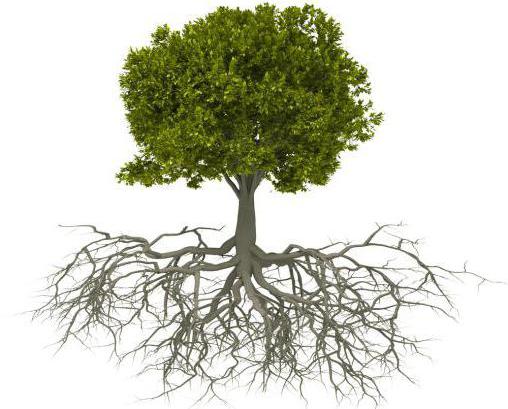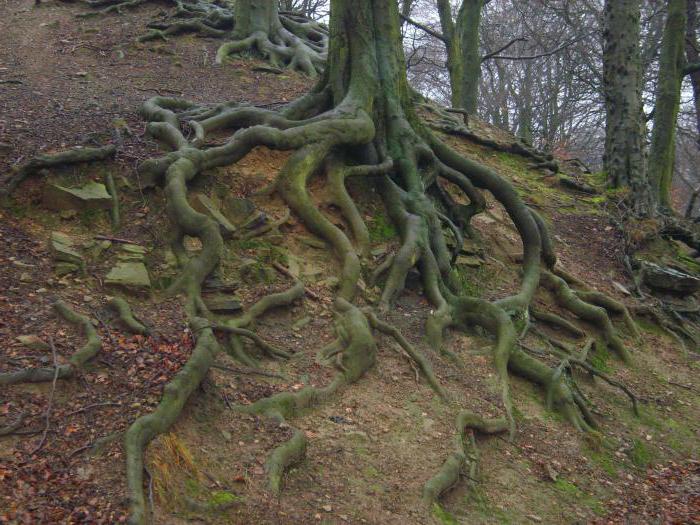One of the most important parts of the plant is the root. It is he who provides the normal vital activity of trees, grasses, shrubs, and even aquatic representatives of the flora. Often the aerial part of the plant is just the tip of the iceberg. Most of it can be underground. It is no coincidence that the roots are so great, because they have very important functions. Let's take a closer look at the amazing features of the plant world.
Root functions
The roots of each plant perform a whole range of tasks, which can vary from species to species, but in most cases these tasks are the same for both trees and their smaller counterparts. The roots of trees and other above-ground plants allow them to stay upright, withstand the wind and animals. This is especially true for large trees because of their mass and height. The root system of aquatic plants helps them attach to the bottom, and also prevents some of them from turning over.

Another root function is nutritional. They absorb water and minerals from the soil and deliver them to the right places. They also synthesize some amino acids, alkaloids and other elements that plants need. Some of the representatives of the flora generally store nutrients directly in the roots (mainly starch and other carbohydrates). Also, do not forget about such a thing as mycorrhiza - a symbiosis of a plant with mushrooms. The root plays a key role in it. The root structure is such that some plants reproduce with its help - root offspring.
Types of Roots
Depending on the structure and function that is assigned to them, there are different types of roots. The first is the main one. It grows directly from the seed during its germination, then to become the main axis of the entire root system. In addition to the main root there are also subordinate clauses. They are formed from a variety of places - on the stems, sometimes on the leaves, and in some cases even on the flowers. Another species is the lateral roots. They appear from the main or subordinate roots and branch to the sides, forming new and new processes.
Root systems
All the roots that a plant possesses form the root system. Depending on the role of the various roots in the life of their host, two types of systems are distinguished - rod and fibrous. The first is distinguished by its focus on the main root, which grows most intensively. In this type, the main rod develops much more efficiently than the lateral ones. However, this difference can be seen mainly at the initial stage of growth. Over time, the side roots begin to inexorably catch up with their main brother, and in older plants they are even larger than the main one. The stem system is characteristic mainly for dicotyledonous plants.
The second type is distinguished by the opposite root features of the root. Such a system is called fibrous. It is characteristic of monocotyledonous plants and is distinguished by its numerous subordinate and lateral processes, filling the space under the plant. Moreover, the main root is usually poorly developed or almost undeveloped.
Root. Root structure
Each root is divided into several zones, each of which is responsible for its own unique functions. One of the most important places is the division zone. It is located at the tip of each root and is responsible for its growth in length. Here myriads of small cells constantly multiply. This process allows this part of the root to perform its difficult task. But the division zone is useless without a root cap, which is located at the end of each root. It consists of layers of fused cells that protect dividing cells from mechanical damage. In addition, the root cover emits a kind of mucus that promotes the promotion of roots in the soil.

The next root segment is the extension zone. It is located immediately behind the division region and is characterized in that its cells constantly grow, although the division process is almost completely absent in them. Then comes the absorption zone - a place in which water and minerals are drawn from the soil. This is due to the myriad of tiny hairs covering this area. They significantly increase the total absorption area. In addition, each hair works as a pump, sucking everything necessary from the soil. Next is the conduction zone, which is responsible for transporting water with mineral substances upstairs. Also, elements responsible for the vital activity of the root system go down from here. This part is very strong and it is from it that the lateral roots grow.
Cross section
If you cut the root, you can see the layers of which it consists. First comes the skin with a width of only one cell. Under it, you can see the root of the root - the parenchyma. It is through its loose tissue that water with minerals enters the axial cylinder. Pericambium forms it - the educational tissue of plants, which usually surrounds conductive tissues.
Around the conducting cylinder are densely closed endoderm cells. They are waterproof, which causes life-giving moisture with minerals to move up. But how then does the liquid get inside? This is due to special passage cells located on the endoderm. In most cases, the roots of grass, trees, and shrubs have such a structure, although sometimes there are differences.
Mycorrhiza
Often the roots of trees are a place of their symbiosis with other life forms. The most common partners of plants are mushrooms.
This phenomenon is called mycorrhiza, which stands for "fungus root." It's hard to believe, but most trees depend on a fruitful union with mycelium. Our usual birches, maples and oaks benefit a lot from this symbiosis.
When the mycelium interacts with the roots, an exchange occurs in which the mycelium gives the tree irreplaceable minerals, receiving carbohydrates in return. This evolutionary course has allowed many plant species to live in conditions unsuitable for their species. Moreover, some representatives of the flora would not exist at all, if not for mycorrhiza. In addition to symbiosis with mushrooms, there is a beneficial collaboration with bacteria, to which the root resorts. The root structure in this case will be different from what we are used to. You can find nodules on it, in which special bacteria live, supplying the tree with atmospheric nitrogen.
Output
One of the most important parts of any plant is the root. The root structure is ideally suited for the tasks that it performs. The root system is an amazing mechanism that nourishes plants. It is not in vain that various mystical currents believe that a tree combines the forces of heaven and earth. Its aboveground part absorbs sunlight, and the roots receive nutrition from the soil.
The significance of the root system is not obvious, since the aerial part of the plant is focused on itself: foliage, trunk, flower, stem. At the same time, the root remains in the shade, modestly fulfilling its honorable mission.